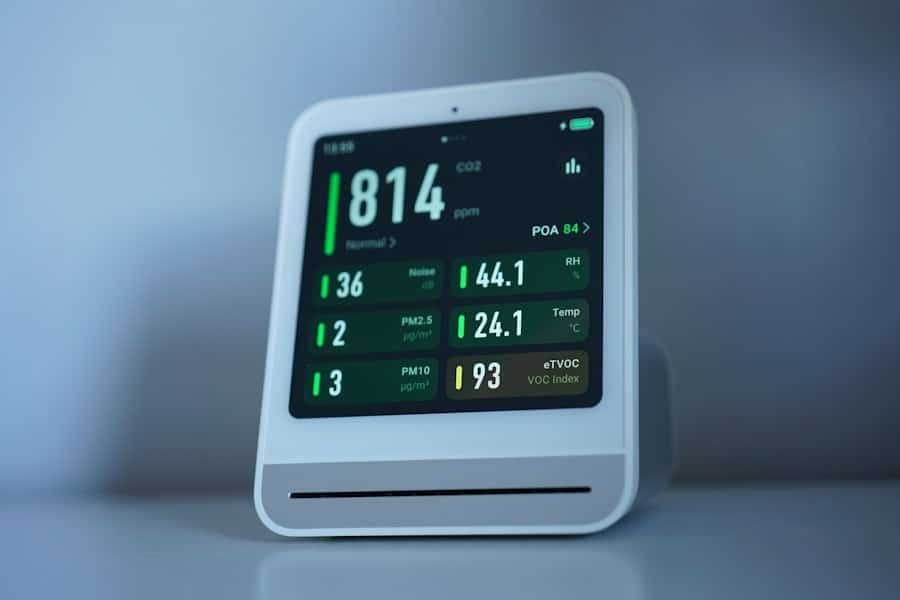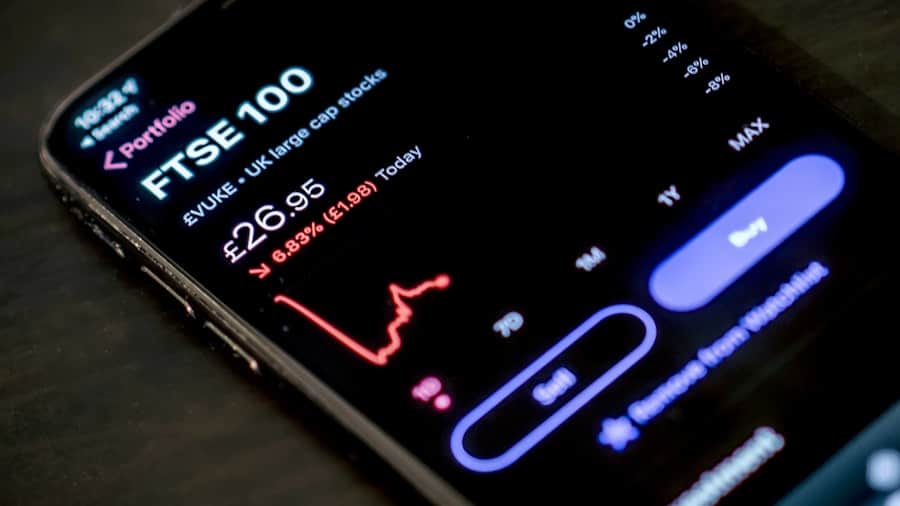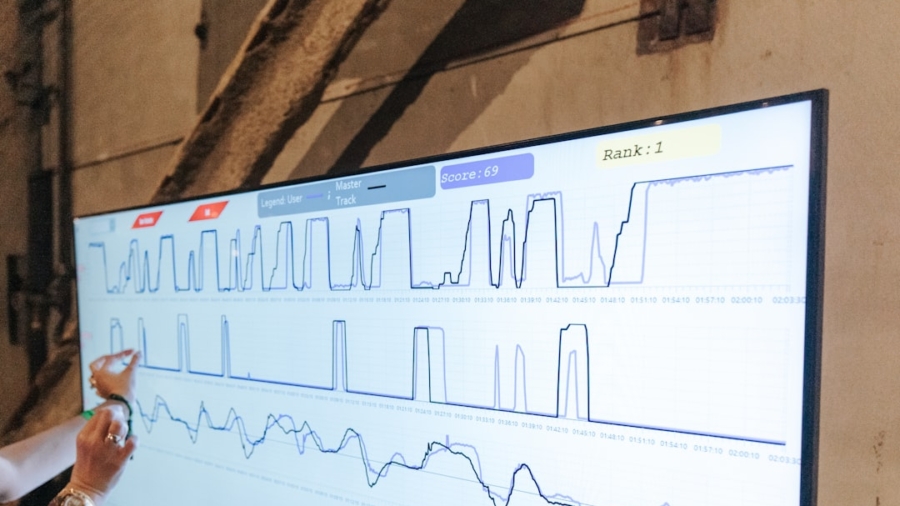In an age where technology permeates every aspect of our lives, the emergence of wearable devices has revolutionized how we approach health and wellness. These gadgets, often worn on the wrist or as accessories, have evolved from simple fitness trackers to sophisticated tools capable of monitoring various physiological parameters. Among their many applications, one of the most compelling is their role in stress reduction.
As stress becomes an increasingly prevalent issue in modern society, the demand for effective management strategies has surged. Wearables offer a unique blend of real-time data collection and personalized feedback, empowering users to take control of their mental well-being. The integration of wearables into stress management practices is not merely a trend; it represents a significant shift in how individuals can engage with their health.
By providing insights into heart rate variability, sleep patterns, and even skin temperature, these devices enable users to identify stress triggers and develop coping mechanisms. The convenience of having such technology at one’s fingertips allows for immediate interventions, making it easier to incorporate stress-reduction techniques into daily routines. As we delve deeper into the science and functionality of these devices, it becomes clear that wearables are not just gadgets; they are powerful allies in the quest for mental tranquility.
Key Takeaways
- Wearables are becoming increasingly popular for stress reduction, offering a convenient and accessible way to manage stress levels.
- The science behind wearables for stress reduction is based on monitoring physiological indicators such as heart rate, breathing, and activity levels to provide feedback and guidance for relaxation techniques.
- There are various types of wearables for stress reduction, including smartwatches, fitness trackers, and biofeedback devices, each offering different features and functionalities.
- Wearables can help with relaxation by providing real-time feedback, guiding breathing exercises, offering meditation programs, and tracking physical activity to promote overall well-being.
- When choosing a wearable for stress reduction, consider factors such as accuracy, comfort, battery life, and compatibility with your lifestyle and stress management needs.
The Science Behind Wearables and Stress Reduction
The efficacy of wearables in stress reduction is grounded in a robust body of scientific research that explores the physiological responses to stress and how technology can aid in managing these responses. Stress activates the body’s fight-or-flight response, leading to increased heart rate, elevated blood pressure, and heightened levels of cortisol, the primary stress hormone. Wearable devices are equipped with sensors that can monitor these physiological markers, providing users with real-time feedback on their stress levels.
For instance, many wearables utilize photoplethysmography (PPG) to measure heart rate and heart rate variability (HRV), which are critical indicators of stress. Research has shown that individuals with higher HRV tend to have better emotional regulation and resilience to stress. By tracking HRV through wearables, users can gain insights into their autonomic nervous system’s functioning and learn when they are entering a stressed state.
This data can be invaluable for developing personalized stress management strategies. For example, if a user notices a drop in HRV during specific activities or times of day, they can adjust their routines accordingly—perhaps by incorporating mindfulness practices or taking breaks to engage in physical activity.
Types of Wearables for Stress Reduction

The market for wearables designed to assist with stress reduction is diverse, encompassing a range of devices tailored to different needs and preferences. Smartwatches are among the most popular options, offering comprehensive health tracking features alongside traditional timekeeping functions. Brands like Apple and Fitbit have integrated stress management tools into their devices, allowing users to monitor their heart rate, track sleep quality, and even engage in guided breathing exercises directly from their wrists.
For instance, devices like the Muse headband utilize EEG technology to measure brain activity during meditation sessions. By providing real-time feedback on mental states, users can adjust their meditation practices to enhance focus and relaxation.
Similarly, portable biofeedback devices such as the HeartMath Inner Balance sensor help users learn to regulate their heart rhythms through breathing techniques, promoting a state of calmness.
How Wearables Can Help with Relaxation
Wearables facilitate relaxation through various features designed to promote mindfulness and self-awareness. Many devices come equipped with guided breathing exercises that encourage users to slow down their breathing patterns—a technique known to activate the parasympathetic nervous system, which counteracts the stress response. For example, the Calm app integrated into some smartwatches offers breathing exercises that guide users through inhalation and exhalation cycles, helping them achieve a state of relaxation.
Additionally, wearables often include sleep tracking capabilities that provide insights into sleep quality and duration. Poor sleep is closely linked to increased stress levels; therefore, understanding one’s sleep patterns can be crucial for effective stress management. By analyzing data on sleep stages and disturbances, users can identify factors that may be contributing to restless nights—such as excessive screen time or irregular sleep schedules—and make necessary adjustments.
Some wearables even offer gentle vibrations or soothing sounds to help users fall asleep more easily or wake up more gradually, further enhancing relaxation.
Tips for Choosing the Right Wearable for Stress Reduction
Selecting the right wearable for stress reduction involves considering several factors that align with individual needs and lifestyle preferences. First and foremost, it is essential to evaluate the specific features offered by different devices. For those primarily interested in heart rate monitoring and stress tracking, a smartwatch with robust health metrics may suffice.
However, individuals seeking more specialized support might benefit from dedicated devices like biofeedback sensors or meditation headbands. Another critical aspect to consider is user interface and compatibility with other applications. A wearable that seamlessly integrates with existing health apps can enhance the overall experience by providing a more comprehensive view of one’s health data.
Additionally, ease of use is paramount; a device that is cumbersome or complicated may deter consistent use. Reading user reviews and seeking recommendations can provide valuable insights into how well a device performs in real-world scenarios.
Integrating Wearables into Your Stress Management Routine

Incorporating wearables into a daily stress management routine requires intentionality and consistency. One effective approach is to set specific goals related to stress reduction—such as practicing mindfulness for a certain number of minutes each day or achieving a target HRV score. By establishing clear objectives, users can leverage the data provided by their wearables to track progress over time.
Moreover, creating reminders or alerts through wearable devices can serve as helpful nudges throughout the day. For instance, setting reminders to take short breaks for deep breathing or stretching can interrupt cycles of stress and promote relaxation. Additionally, many wearables allow users to log their moods or stress levels at various times during the day, enabling them to identify patterns and triggers more effectively.
This self-awareness is crucial for developing personalized coping strategies that resonate with individual experiences.
Success Stories: Real-life Experiences with Wearables for Stress Reduction
Numerous individuals have shared their success stories regarding the positive impact of wearables on their stress management journeys. For example, Sarah, a busy marketing executive, found herself overwhelmed by work-related pressures that led to chronic anxiety. After purchasing a smartwatch equipped with stress-tracking features, she began monitoring her heart rate variability during stressful meetings.
Similarly, John, a college student facing academic pressures, turned to a meditation headband that provided real-time feedback on his brain activity during meditation sessions. Initially skeptical about its effectiveness, he soon discovered that the device helped him stay focused during practice and improved his overall mental clarity.
As a result, John reported feeling more relaxed and better equipped to handle his coursework without succumbing to overwhelming stress.
The Future of Wearables for Stress Reduction
As technology continues to advance at an unprecedented pace, the future of wearables for stress reduction looks promising. Innovations in artificial intelligence and machine learning are likely to enhance the capabilities of these devices further. For instance, future wearables may be able to analyze user data more comprehensively and provide personalized recommendations based on individual patterns and preferences.
Moreover, as research continues to uncover the intricate connections between physical health and mental well-being, we can expect wearables to incorporate even more sophisticated metrics related to emotional states and psychological resilience. The potential integration of virtual reality (VR) experiences with wearables could also offer immersive relaxation techniques that transport users away from their daily stresses. In conclusion, as we navigate an increasingly complex world filled with challenges and uncertainties, wearables stand out as valuable tools for managing stress effectively.
Their ability to provide real-time feedback and promote self-awareness empowers individuals to take charge of their mental health in ways previously unimaginable. As technology evolves, so too will our understanding of how best to harness these devices for optimal well-being.
In addition to exploring wearables for stress reduction and relaxation, you may find it beneficial to read about the best software for online arbitrage, which can help streamline your purchasing processes and reduce the stress associated with managing inventory. For more information, check out the article here.
FAQs
What are wearables for stress reduction and relaxation?
Wearables for stress reduction and relaxation are devices that are designed to help individuals manage and reduce stress levels. These devices can include smartwatches, fitness trackers, and other types of wearable technology that offer features such as guided breathing exercises, heart rate monitoring, and stress tracking.
How do wearables help in stress reduction and relaxation?
Wearables for stress reduction and relaxation often use biometric data such as heart rate variability to provide feedback to the user about their stress levels. They may also offer guided meditation or breathing exercises to help users relax and reduce stress. Some wearables also provide insights and recommendations based on the user’s stress patterns.
What are the benefits of using wearables for stress reduction and relaxation?
Using wearables for stress reduction and relaxation can help individuals become more aware of their stress levels and develop healthier coping mechanisms. These devices can also provide personalized feedback and recommendations for managing stress, leading to improved overall well-being.
Are wearables for stress reduction and relaxation effective?
Research has shown that certain wearables designed for stress reduction and relaxation can be effective in helping individuals manage stress. However, the effectiveness of these devices may vary depending on the individual and their specific needs. It’s important to consider these devices as part of a holistic approach to stress management, including other lifestyle factors and professional guidance if needed.
What should I consider when choosing a wearable for stress reduction and relaxation?
When choosing a wearable for stress reduction and relaxation, it’s important to consider the features that are most relevant to your needs. Look for devices that offer accurate biometric tracking, guided relaxation exercises, and personalized insights. It’s also important to consider factors such as comfort, battery life, and compatibility with other devices or apps you may use for stress management.

